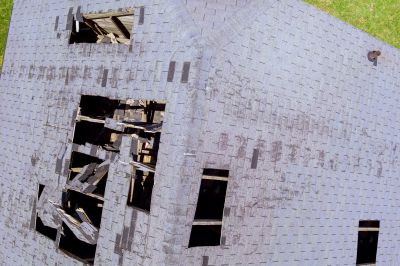Top-Rated Products For Damaged Roof Restoration You Should Know
Learn about high-performing materials that enhance roof durability and protect your home from further damage.
 When dealing with a damaged roof, selecting the appropriate products for replacement is crucial to ensure durability and protection for your property. The process often involves assessing the extent of the damage and choosing materials that can withstand local weather conditions and match the existing roof structure. From shingles to underlayment, a wide variety of products are available to address different types of damage and roofing styles. Proper installation and high-quality materials can extend the lifespan of your roof and help prevent future issues.
When dealing with a damaged roof, selecting the appropriate products for replacement is crucial to ensure durability and protection for your property. The process often involves assessing the extent of the damage and choosing materials that can withstand local weather conditions and match the existing roof structure. From shingles to underlayment, a wide variety of products are available to address different types of damage and roofing styles. Proper installation and high-quality materials can extend the lifespan of your roof and help prevent future issues.
Top Overall Option
Comprehensive Roofing Replacement System
A complete roofing replacement system typically includes a combination of durable shingles, high-quality underlayment, and protective flashing components. These systems are designed to work together to provide a seamless, weather-resistant barrier that can adapt to various roof styles and conditions. When selecting such a system, it is essential to ensure that all components are compatible and meet local building codes. Proper installation is key to maximizing the benefits of a comprehensive system, offering a reliable solution for those seeking a thorough approach to damaged roof replacement.
Types of Products For Damaged Roof Replacements
Asphalt Shingles
Widely used for residential roofs, asphalt shingles come in various styles and colors, offering a versatile option for roof replacements.
Metal Roofing Panels
Known for their durability and longevity, metal panels are suitable for a range of architectural styles and weather conditions.
Rubber Membranes
Ideal for flat or low-slope roofs, rubber membranes provide waterproofing and flexibility for repairs and replacements.
Wood Shingles and Shakes
Offering a natural aesthetic, wood shingles and shakes are used for specific architectural styles and require maintenance.
Synthetic Roofing Materials
A variety of synthetic options mimic traditional materials like slate or wood while offering enhanced durability and ease of installation.
Slate Tiles
Slate tiles provide a classic, high-end appearance with excellent longevity, suitable for premium roofing projects.
Underlayment
Essential for added protection, underlayment acts as a secondary barrier against water infiltration beneath the primary roofing material.
Flashing
Metal or plastic flashing is used around roof intersections, chimneys, and vents to prevent water leaks.
Roof Coatings
Reflective or waterproof coatings can extend the life of existing roofs or serve as a protective layer during repairs.
Ventilation Products
Proper ventilation components help regulate temperature and moisture levels in the attic space, contributing to overall roof health.
Ice and Water Shields
These membranes provide additional protection against ice dams and water infiltration in vulnerable areas.
Roof Sealants
Sealants are used to fill gaps and cracks, preventing water intrusion and extending the integrity of roof components.
Insulation Materials
While not a roofing material per se, proper insulation contributes to energy efficiency and can be part of a comprehensive roof replacement project.
Popular Choices
A common choice for residential roof replacements, offering a balance of affordability and variety.
Favored for durability and low maintenance, metal sheets are trending in many roofing projects.
Often selected for flat roofs, these membranes are appreciated for their flexibility and waterproofing.
Offering a lightweight alternative to traditional slate, these panels are gaining popularity for aesthetic versatility.
Designed for visual appeal, architectural shingles are a trending choice for enhancing curb appeal.
Known for sleek appearance and durability, standing seam panels are a preferred option for modern designs.
Easy to install and effective at waterproofing, these membranes are trending for quick repairs.
Advanced underlayment options are popular for added protection and longevity.
These specialized membranes are increasingly used in colder climates to prevent ice dam formation.
Flexible and durable, these sheets are trending for flat roof repairs and replacements.
Roof replacement projects can vary significantly in scope, from minor repairs to complete overhauls. For minor damages, patching materials and sealants may suffice, but more extensive damage typically requires comprehensive solutions like new roofing panels or membrane systems. It is important to consider the compatibility of replacement products with your current roof to maintain structural integrity and aesthetic appeal.
Choosing the right products also involves understanding the specific requirements of your roof’s design, including slope, material compatibility, and local environmental factors. For example, areas prone to heavy rainfall or snow may benefit from waterproof membranes and reinforced shingles. Additionally, considering ease of installation and long-term maintenance needs can influence product selection, helping homeowners and contractors to make informed decisions that align with their project goals.
Key Buying Considerations
- Compatibility with existing roof structure and materials
- Climate and weather resistance features suitable for your area
- Durability and expected lifespan of the product
- Ease of installation and whether professional help is needed
- Weight of the roofing material and its impact on the roof structure
- Waterproofing and leak prevention capabilities
- Aesthetic match with your home’s architectural style
- Maintenance requirements over time
- Local building codes and regulations compliance
- Availability of warranty or guarantee from the manufacturer
- Cost considerations including material and installation expenses
- Environmental factors such as wind resistance and impact resistance
- Energy efficiency features like reflective coatings or insulation compatibility
- Potential for future repairs or upgrades
- Supplier reputation and product reviews
